In a world where software updates often feel like a surprise party nobody asked for, rolling updates swoop in like a superhero. They promise a smoother transition to the latest features without the dreaded downtime. Imagine updating your favorite app while still enjoying your morning coffee—no interruptions, no fuss, just seamless upgrades that keep your digital life humming along.
Rolling updates allow users to experience new functionalities gradually, like savoring a multi-course meal instead of a rushed buffet. This approach minimizes risks and enhances user satisfaction, making it a win-win for both developers and users. So, if you’re tired of those clunky update processes that feel like a marathon, it’s time to embrace the rolling update revolution and enjoy a more refined, efficient way of keeping software fresh and exciting.
Table of Contents
ToggleUnderstanding Rolling Updates
Rolling updates allow software to implement changes gradually without significant disruptions. This method ensures a continuous service experience while introducing new features or fixes.
Definition of Rolling Updates
Rolling updates refer to a deployment strategy in software where updates are released incrementally across a system. This process replaces old versions of software with new ones progressively, rather than deploying all changes at once. By doing so, it minimizes the likelihood of widespread failures and enhances system stability. Users generally experience updates over time, reducing the pressure of downtime and providing the opportunity for real-time troubleshooting.
Benefits of Rolling Updates
Rolling updates offer several advantages for software management. First, they reduce downtime, allowing users to access the software continuously during updates. Second, the approach mitigates risks associated with updates by monitoring performance progressively. Third, this method leads to faster identification and resolution of potential issues since not all users upgrade simultaneously. Lastly, rolling updates enhance user satisfaction, as they provide a gradual transition to new features. Embracing this method fosters a more agile and responsive software environment.
Implementing Rolling Updates
Implementing rolling updates significantly enhances software deployment efficiency. This method allows teams to introduce changes progressively, ensuring seamless user experiences.
Best Practices for Rolling Updates
Monitoring performance during updates is essential. Prioritizing changes based on user impact fosters smoother transitions. Establishing a rollback plan ensures swift recovery if issues arise. Testing new features in a staging environment helps identify potential complications before deployment. Gradual user group updates can reveal immediate feedback and encourage iterative improvements.
Common Challenges in Rolling Updates
Managing simultaneous version compatibility can pose difficulties. It’s important to handle user sessions properly across versions to avoid disruptions. Tracking errors may become complex as diverse deployments exist. Communication between development and operations teams often highlights challenges in coordinating updates effectively. Balancing innovation speed with stability is crucial to safeguarding production environments.
Tools and Technologies for Rolling Updates
Rolling updates rely on various deployment tools and technologies to facilitate their implementation and ensure seamless transitions during software updates.
Popular Deployment Tools
Kubernetes stands out as a leading container orchestration tool, enabling teams to manage applications in microservices architectures. Docker complements Kubernetes by simplifying containerization, which significantly improves the deployment process. Jenkins excels in continuous integration and continuous deployment (CI/CD), automating tasks during the update cycle. Spinnaker provides visibility into multiple cloud providers, managing application delivery efficiently. Additionally, Helm acts as a package manager for Kubernetes, streamlining application deployments and maintenance.
Comparison of Tools
Kubernetes and Docker frequently work together, with Kubernetes providing orchestration while Docker delivers containers. Jenkins and Spinnaker target CI/CD workflows but differ in cloud integration capabilities. Jenkins focuses on automating the build and deployment process, while Spinnaker emphasizes multi-cloud deployment visibility. Helm simplifies Kubernetes deployments, making it easier to handle application versions compared to traditional methods. Each tool offers unique strengths, enabling teams to choose solutions that best fit their specific needs in deploying rolling updates effectively.
Real-World Examples of Rolling Updates
Rolling updates demonstrate their effectiveness through various case studies across different industries.
Case Study 1
A leading e-commerce platform utilized rolling updates to enhance its user experience. During peak shopping seasons, developers implemented changes to specific features rather than overhauling the entire system. This incremental approach minimized downtime, ensuring customers could continue shopping without interruption. By monitoring performance closely, the team quickly identified and addressed any issues that arose in real time. The result was an impressive increase in user satisfaction scores during critical sales events. This example illustrates how rolling updates can effectively maintain service continuity while implementing significant modifications.
Case Study 2
A popular social media app adopted rolling updates to improve its functionality and user engagement. The development team prioritized feature releases based on user feedback, gradually introducing enhancements like new filters and messaging options. This strategy allowed them to test features with a limited audience first. Users provided feedback that directly influenced further development, increasing overall satisfaction. Additionally, monitoring system performance throughout the process ensured that any potential issues received immediate attention. This case highlights the necessity of involving user input in guiding the rolling updates process.
Conclusion
Rolling updates represent a significant advancement in software deployment strategies. By adopting this approach, teams can enhance system stability while delivering new features incrementally. The benefits are clear: reduced downtime and improved user satisfaction create a more agile and responsive environment.
As organizations continue to navigate the complexities of software updates, embracing rolling updates can lead to a more efficient and user-friendly experience. With the right tools and best practices in place, teams can ensure smooth transitions and maintain high levels of service continuity. Ultimately, rolling updates are not just a trend but a vital strategy for modern software development.







